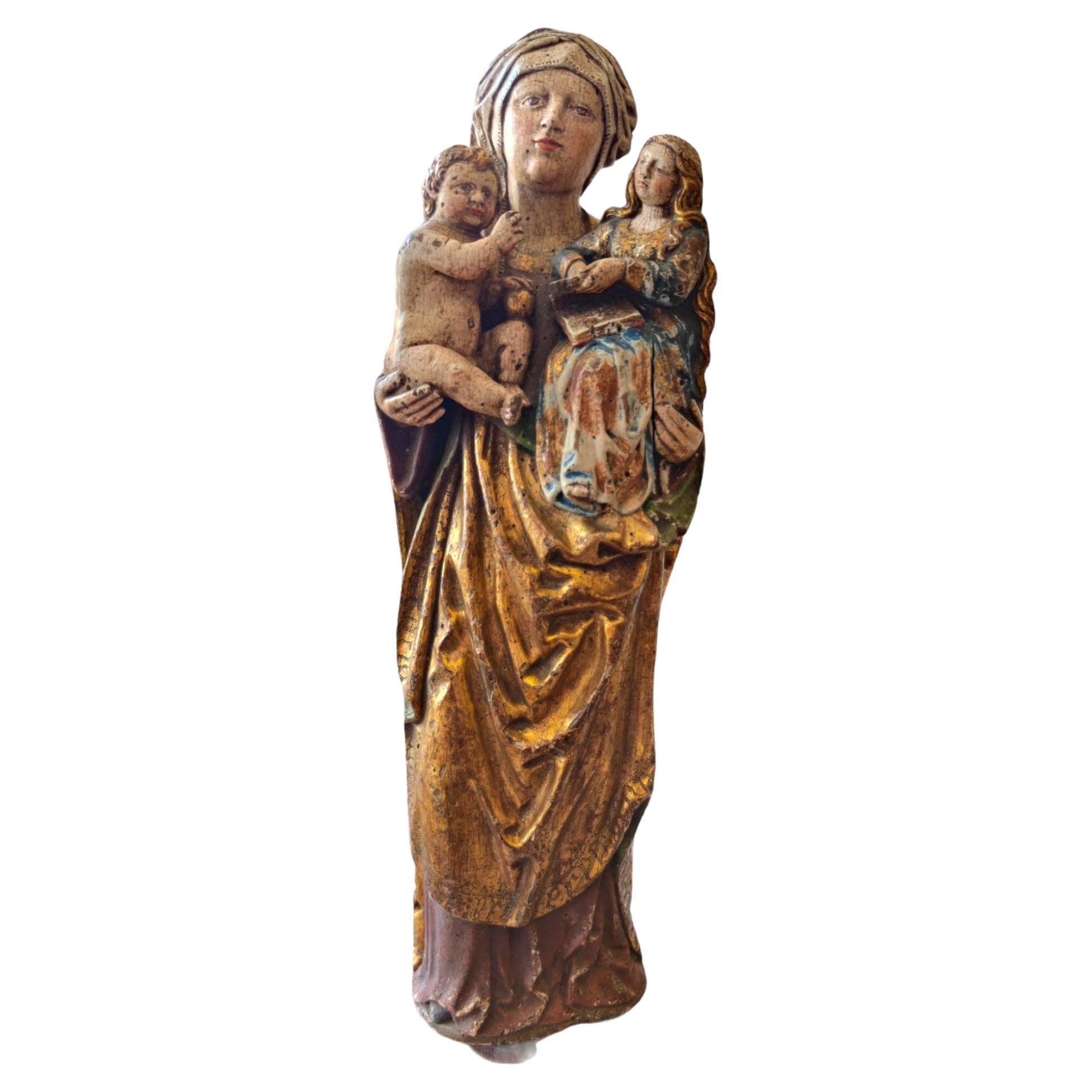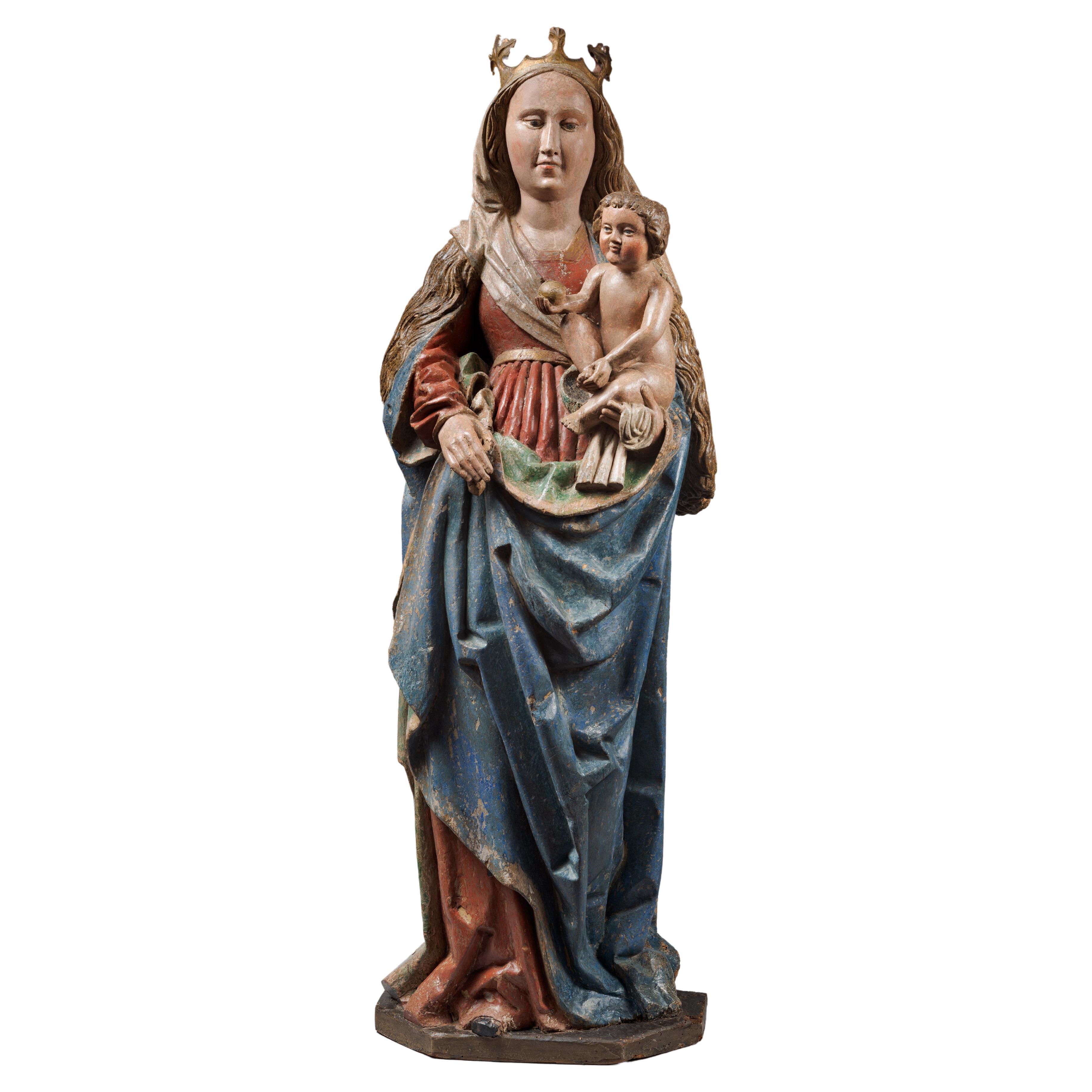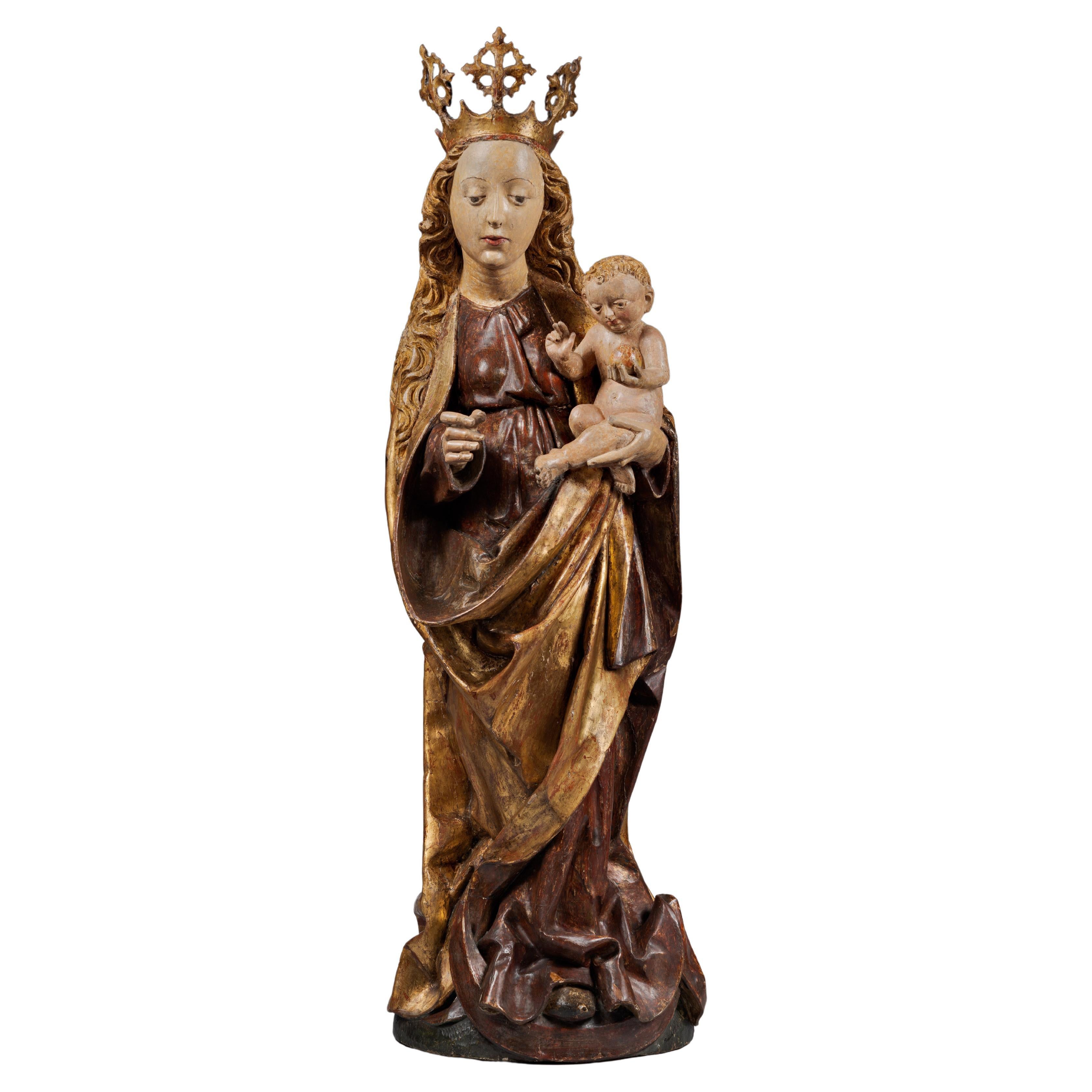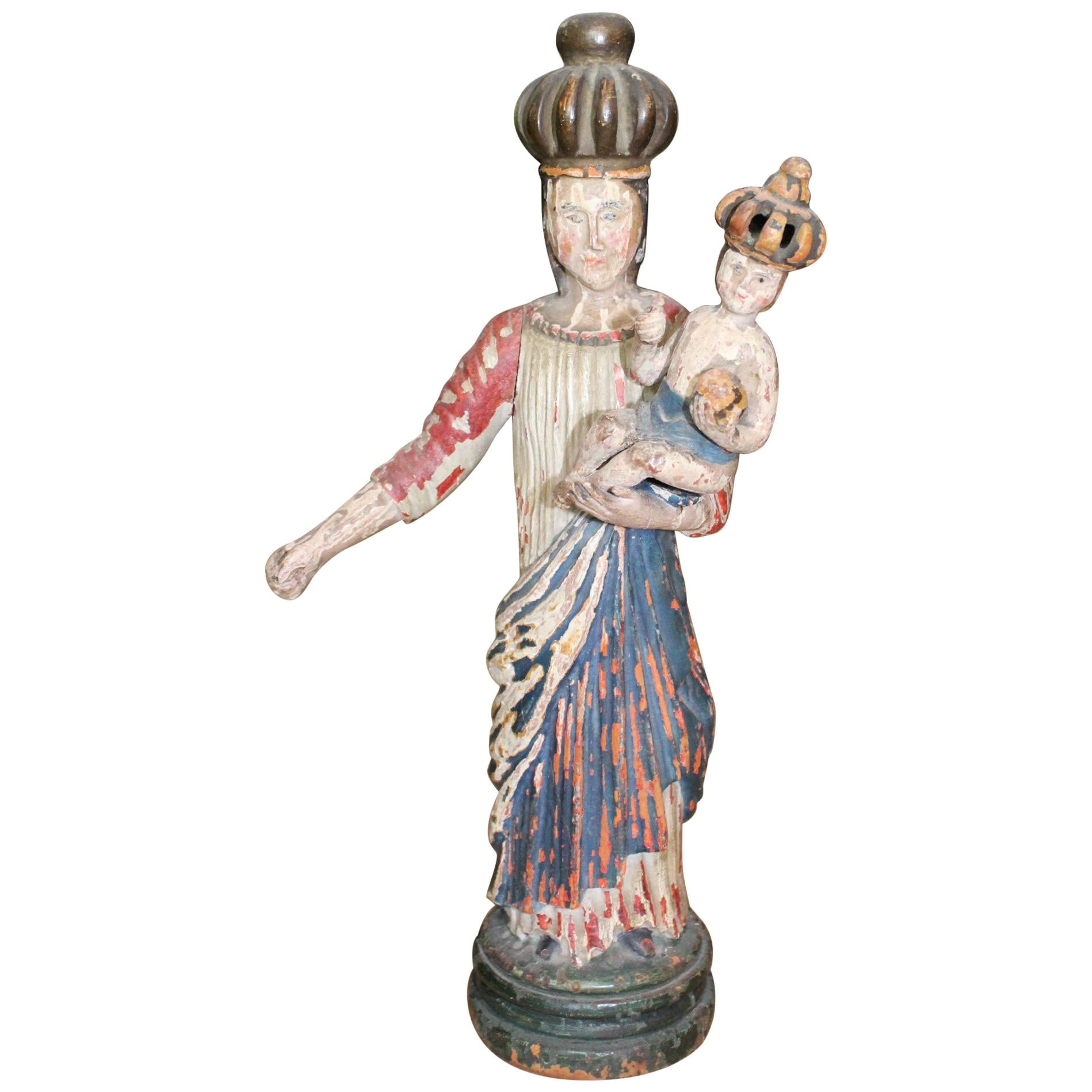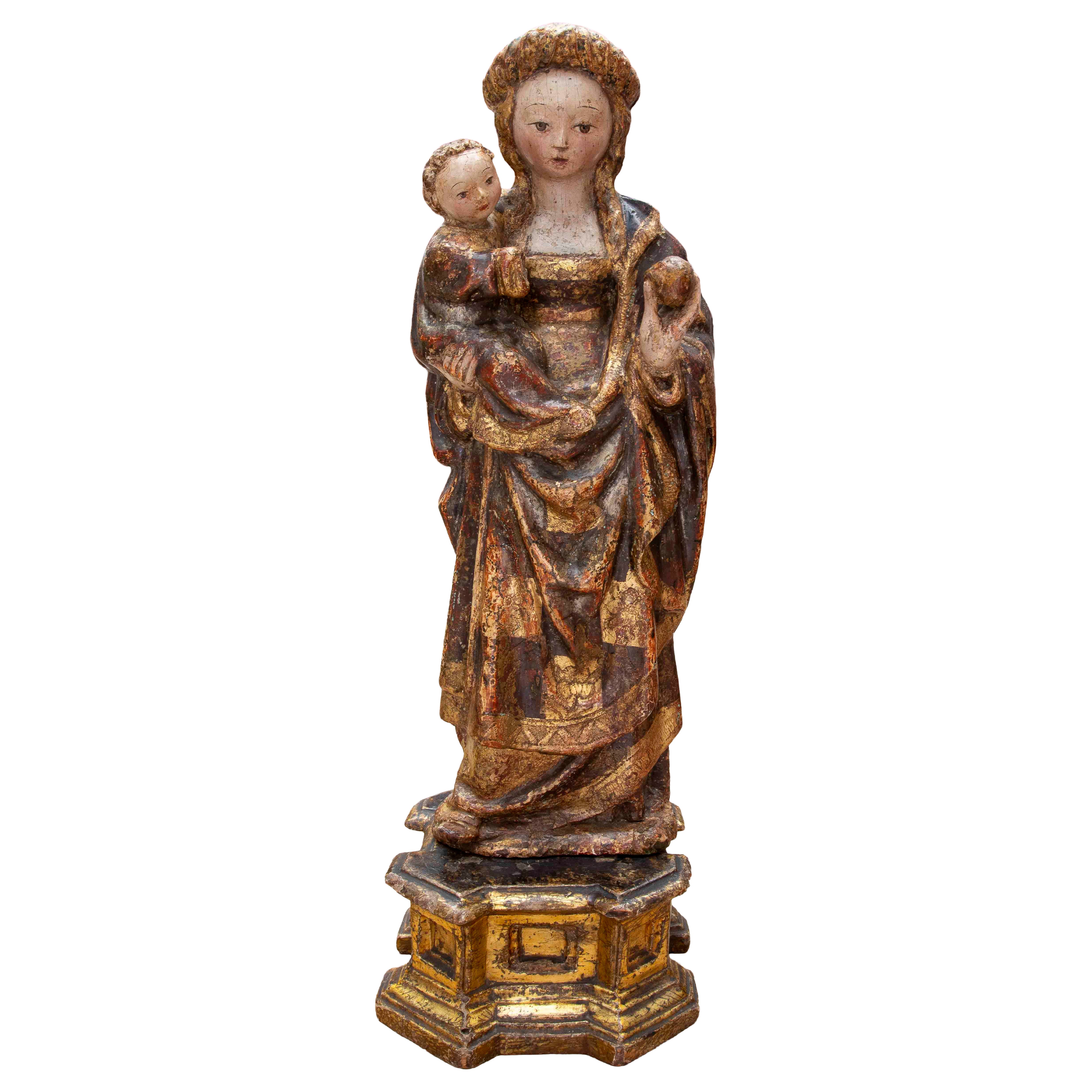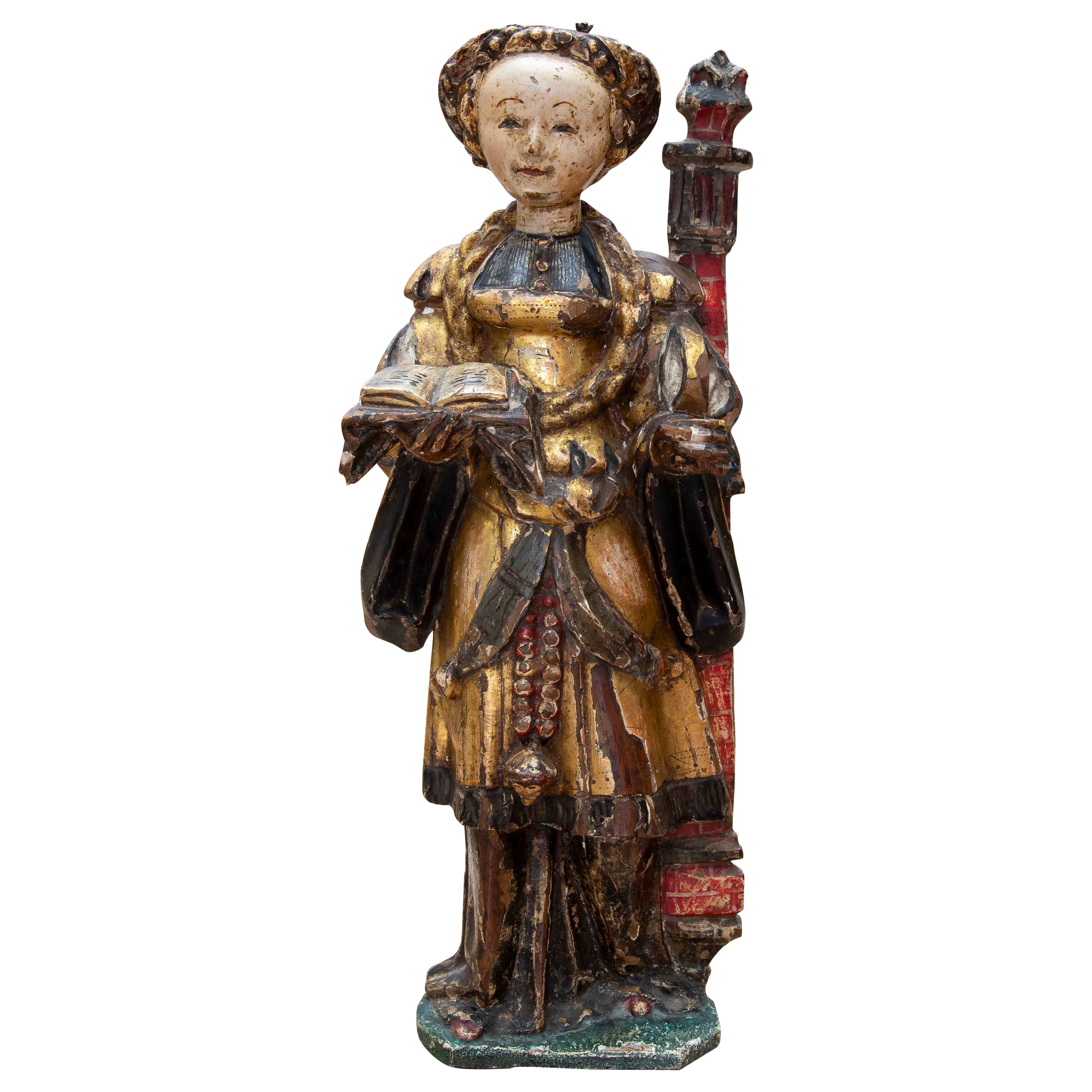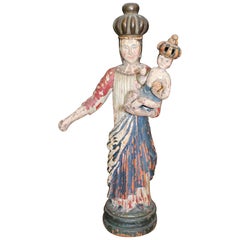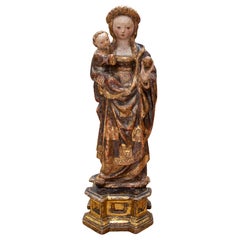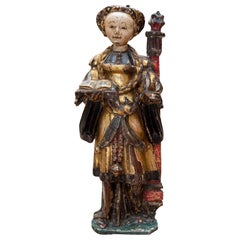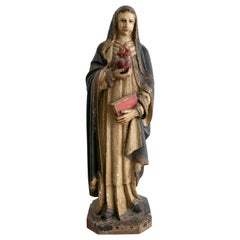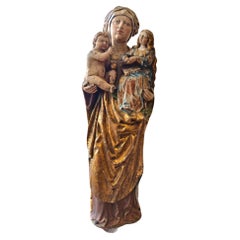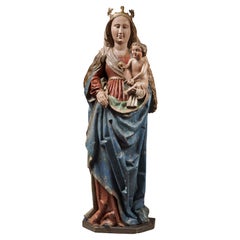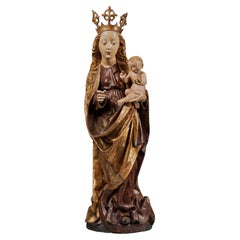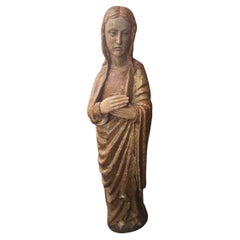Items Similar to 15th Century Spanish Gothic Virgin and Child Polychrome Wooden Sculpture
Want more images or videos?
Request additional images or videos from the seller
1 of 17
15th Century Spanish Gothic Virgin and Child Polychrome Wooden Sculpture
On Hold
$14,229.23
On Hold
£10,693.85
On Hold
€12,000
On Hold
CA$19,927.33
On Hold
A$21,854.15
On Hold
CHF 11,318.91
On Hold
MX$262,594.79
On Hold
NOK 142,532.09
On Hold
SEK 133,770.44
On Hold
DKK 91,444.16
About the Item
15th century Spanish Gothic Virgin and child polychrome figurative wooden sculpture.
- Dimensions:Height: 19.3 in (49 cm)Width: 7.49 in (19 cm)Depth: 5.91 in (15 cm)
- Materials and Techniques:
- Period:
- Date of Manufacture:1450
- Condition:Wear consistent with age and use.
- Seller Location:Marbella, ES
- Reference Number:1stDibs: LU3044321642132
About the Seller
5.0
Platinum Seller
Premium sellers with a 4.7+ rating and 24-hour response times
Established in 1996
1stDibs seller since 2017
716 sales on 1stDibs
Typical response time: <1 hour
- ShippingRetrieving quote...Shipping from: Marbella, Spain
- Return Policy
Authenticity Guarantee
In the unlikely event there’s an issue with an item’s authenticity, contact us within 1 year for a full refund. DetailsMoney-Back Guarantee
If your item is not as described, is damaged in transit, or does not arrive, contact us within 7 days for a full refund. Details24-Hour Cancellation
You have a 24-hour grace period in which to reconsider your purchase, with no questions asked.Vetted Professional Sellers
Our world-class sellers must adhere to strict standards for service and quality, maintaining the integrity of our listings.Price-Match Guarantee
If you find that a seller listed the same item for a lower price elsewhere, we’ll match it.Trusted Global Delivery
Our best-in-class carrier network provides specialized shipping options worldwide, including custom delivery.More From This Seller
View All18th Century North Spanish Polychrome Wooden Virgin Sculpture
Located in Marbella, ES
18th Century north Spanish polychrome wooden sculpture of the Virgin Mary holding baby Jesus.
Category
Antique Late 18th Century Spanish Figurative Sculptures
Materials
Wood
15th Virgin and Child in Polychrome and Gilt Wood. On a pedestal. Mechelen.
Located in Marbella, ES
The poupées de Malines —Mechelen dolls— are small sculptures, generally of medium bulk (with minimally worked backs), produced in the small Belgian city, situated north of Flanders b...
Category
Antique 15th Century and Earlier Belgian Figurative Sculptures
Materials
Gold
15th Polychrome Wooden Sculpture of Saint Barbara. Mechelen.
Located in Marbella, ES
This sculpture represents the maiden of Nicomedia kept in a tower with three windows where her father locked her away. In her right hand she holds an open book that records her medit...
Category
Antique 15th Century and Earlier Belgian Figurative Sculptures
Materials
Gold
Mid19th Century Spanish Virgin Mary of the Sacred Heart Painted Wooden Sculpture
Located in Marbella, ES
Antique mid-19th century Spanish hand carved painted wooden sculpture of Virgin Mary of the Sacred Heart with glass eyes.
Category
Antique 19th Century Spanish Figurative Sculptures
Materials
Wood
19th Century Mexican Wooden Hand-Painted Virgin with Child in Arms
Located in Marbella, ES
19th century Mexican wooden hand-painted virgin with child in arms.
Category
Late 20th Century Mexican Figurative Sculptures
Materials
Wood
19th Century Mexican Wooden Hand-Painted Virgin with Child in Arms
Located in Marbella, ES
19th century Mexican wooden hand-painted virgin with child in arms.
Category
Late 20th Century Mexican Figurative Sculptures
Materials
Wood
You May Also Like
15th Century Gothic Virgin
Located in Madrid, ES
15th century Gothic Virgin
Gothic Virgin of the 15th century Virgin in carved and polychrome wood of the 15th century. In its original state, muse...
Category
Antique 15th Century and Earlier Figurative Sculptures
Materials
Wood
$20,750
Important 15th Century Polychrome Wood Virgin and Child
Located in Saint-Ouen, FR
Important 15th century polychrome wood virgin and child
Origin: Southern Germany
Period: Late 15th Century, Ca. 1480-1490
Height : 125 cm
Polychrome limewood
Good condition
Provenance : Private collection, Alsace, France.
As soon as 1430, sculpture starts a major and deep stylistic evolution than will unfold over a century, until around 1530. We call it the International Gothic. This production is particularly interested in a quest for realism.
This important Virgin and Child wears a long red dress with a round gilded neckline. A delicate golden belt...
Category
Antique 15th Century and Earlier Figurative Sculptures
Materials
Wood
Polychrome carved wood Virgin and Child from the 15th Century
Located in Saint-Ouen, FR
POLYCHROME CARVED WOOD VIRGIN AND CHILD FROM THE 15TH CENTURY
ORIGIN: SOUTH GERMANY, SWABIA, NUREMBERG REGION
PERIOD: 15th CENTURY
Height: 94,6cm
Width : 28 cm
Depth : 18 cm
Lime wood
Original Polychromy
Good state of conservation
From 1430 onwards, sculpture underwent a profound stylistic renewal which continued until 1530, the so-called late Gothic period. In the Germanic countries, original sculptures flourished in an expressive and sensitive vein.
This renewal was inspired by the art of Nicholas of Leiden, who was active in Strasbourg in the 1460's. His style broke with the refined and delicate art of the international Gothic style in force throughout Europe around 1400. The figures became more authentic and realistic. The bodies became denser. Clothes are animated by deep, broken folds, the fabrics are heavy and have a great decorative value. In addition, the polychromy is intended to be illusionistic. The painting makes it possible to restore the texture of the materials, the richness of the textiles and the natural skin tone of the characters.
The dissemination of images through engraving and the great mobility of the artists led to the success of this style, which conquered the Upper Rhine, Swabian, Tyrolean and Franconian regions, contributing to the formation of a common stylistic identity in these regions. The economic boom in the flourishing German cities was conducive to the development of original production. Attracted by this prosperity, numerous workshops were set up in order to meet the orders of religious communities, the Church and the laity, including a clientele of middle-class rockers.
This precious Virgin and Child is depicted standing on a crescent moon, her head encircled by a crown of tall flowers. Her long wavy hair spreads over her shoulders, framing her beautiful oval face. Under fine eyebrows drawn with a brushstroke, her almond-shaped, slightly drooping eyes look at the Child with infinite softness. She is dressed in a long red dress with a rounded neckline, belted under the chest. The heavy fabric of her dress spreads out in broken folds at her feet. On her shoulders she wears a golden cloak. The drapery has deep folds. She holds out her right hand while she holds the Christ Child with her left.
Christ, with his well-defined hair, is naked. His cheeks are highlighted with red, he holds an apple in his left hand and with the other hand makes a sign of blessing towards the faithful.
Virgins with Child on a crescent moon were very popular in the second half of the 15th century, especially as the central subject of altarpieces in southern Germany and Austria. The crescent moon on which Mary is standing is reminiscent of the Woman of the Apocalypse. Often equated with the Virgin Mary.
This episode is taken from the Book of Revelation (12:1-6)
1 Then a great sign appeared in heaven: a woman clothed with the sun, with the moon under her feet and a crown of twelve stars on her head. ; 2 She was pregnant, and she cried out because she was in labor, in pain from giving birth. ; 3 Then another sign appeared in heaven: it was a great fiery red dragon, with seven heads and ten horns, and seven royal crowns on his heads. ; 4 His tail swept down a third of heaven's stars and threw them to the earth. The dragon stood in front of the woman who was about to give birth so that when she gave birth, he might devour her child. ; 5 She gave birth to a son, a male child who is to rule all the nations with an iron rod. Her child was snatched up to God and his throne. ; 6 Then the woman fled into the desert, where God has prepared a place for her. There she will be taken care of for one thousand two hundred sixty days.
Some theologians see in this woman a reference to the Virgin Mary and in the child, Jesus.
This remarkable work is a very fine example of sculpture from Swabian workshops in the last decades of the 15th century. It presents all the characteristic stylistic elements: a highly girdled silhouette, an abundant drapery with angular folds, but also a great physical presence accentuated by the polychromy that restores the anatomical details. This group is made of a wooden log. The deep folds of the drapery highlight the movement of the Virgin holding the child.
Bibliography :
Sophie Guillot de Suduiraut, Dévotion et Séduction, Sculptures souabes des musées de France, vers 1460-1530, Paris musée du Louvre-Éditions somogy, 2015
“Revelation 12 - Common English Bible...
Category
Antique 15th Century and Earlier German Gothic Figurative Sculptures
Materials
Wood
Romanesque Sculpture of the Virgin – 15th Century
Located in Madrid, ES
"Romanesque Sculpture of the Virgin – 15th Century"
Period: 15th century
Romanesque
Technique: Carved and polychromed solid wood
Dimensions: 124 x 36 x 17 cm
Impressive Romanesque s...
Category
Antique 15th Century and Earlier Italian Greco Roman Figurative Sculptures
Materials
Wood
18th Century Continental Polychrome Terracotta Sculpture of the Kneeling Virgin
Located in Palm Desert, CA
A 17th-18th century continental painted terracotta sculpture of a kneeling Virgin in the manner of Angolo di Poli. This exquisite terracotta sculpture features a poignant depiction of the Virgin Mary. The red and blue clothes...
Category
Antique Early 18th Century European Figurative Sculptures
Materials
Terracotta
19th Century Polychrome Wooden Horse
Located in Brussels, Brussels
Elegant little carved wooden horse from the 19th century in polychrome wood
Very beautiful polychromy which has a lot of charm
Old child's toy with the front wheels which moves
...
Category
Antique 19th Century British Aesthetic Movement Toys and Dolls
Materials
Fruitwood
More Ways To Browse
Antique Russian Icon
German Religious Collectables
Antique Star Of David
Holy Water
Antique Religious Icons
Century Russian Icon
Hand Carved Christ
Religious Altar
Antique Torah
Mary Religious
Antique Church Window
Christ On The Cross
Antique Baby Jesus
Gothic Church Furniture
Antique Religious Statues
Antique Holy Water
Antique Rosaries
Silver Plate Items Silver
